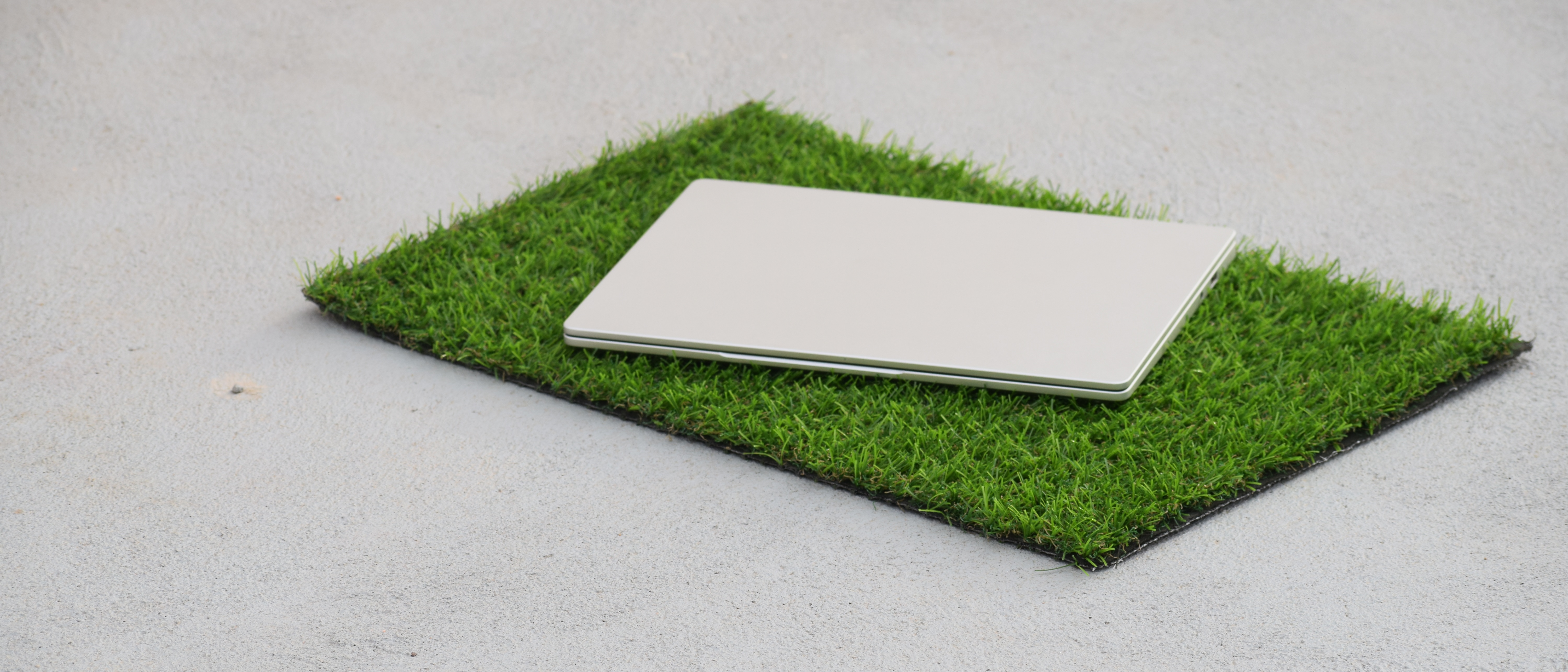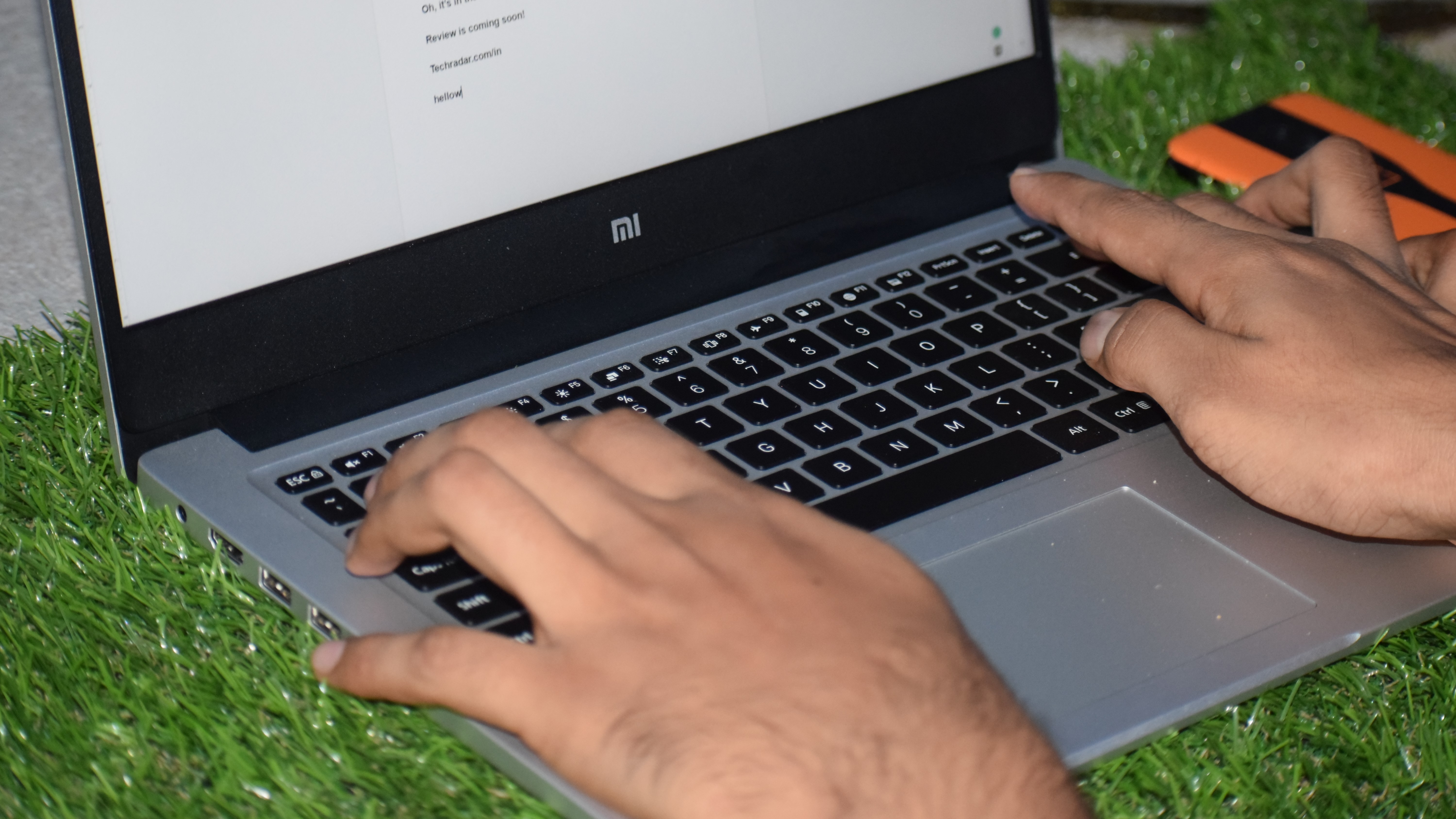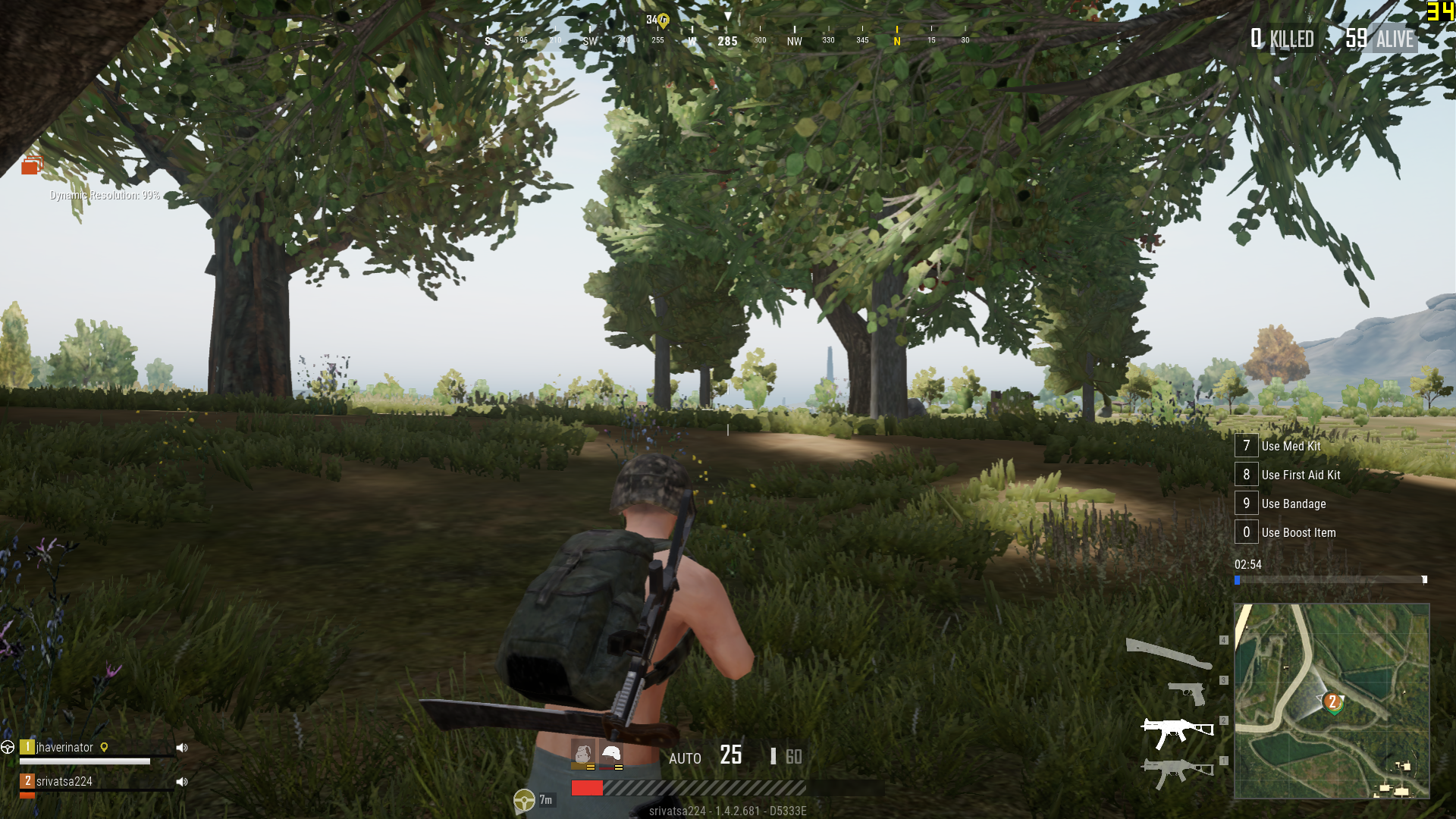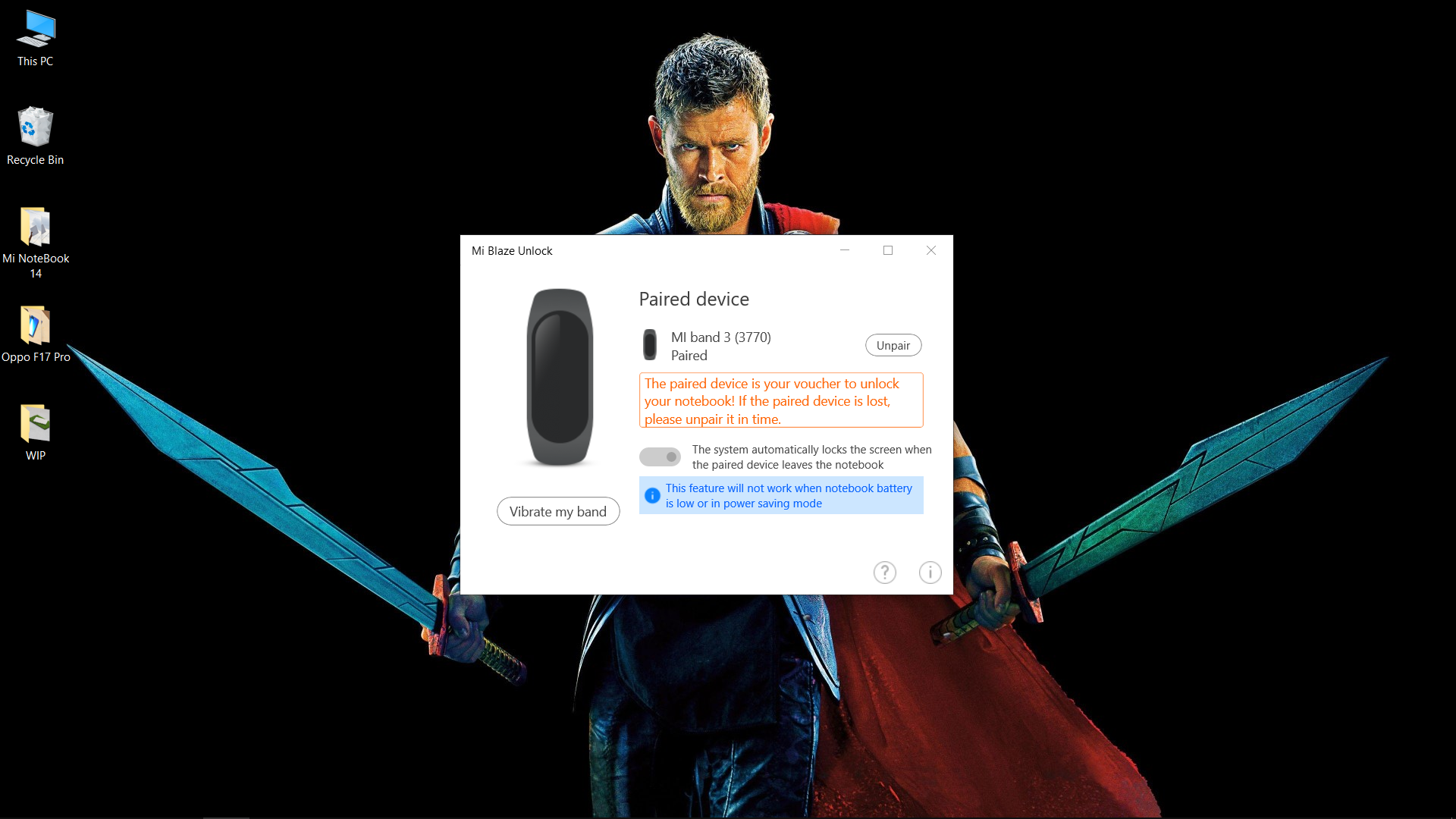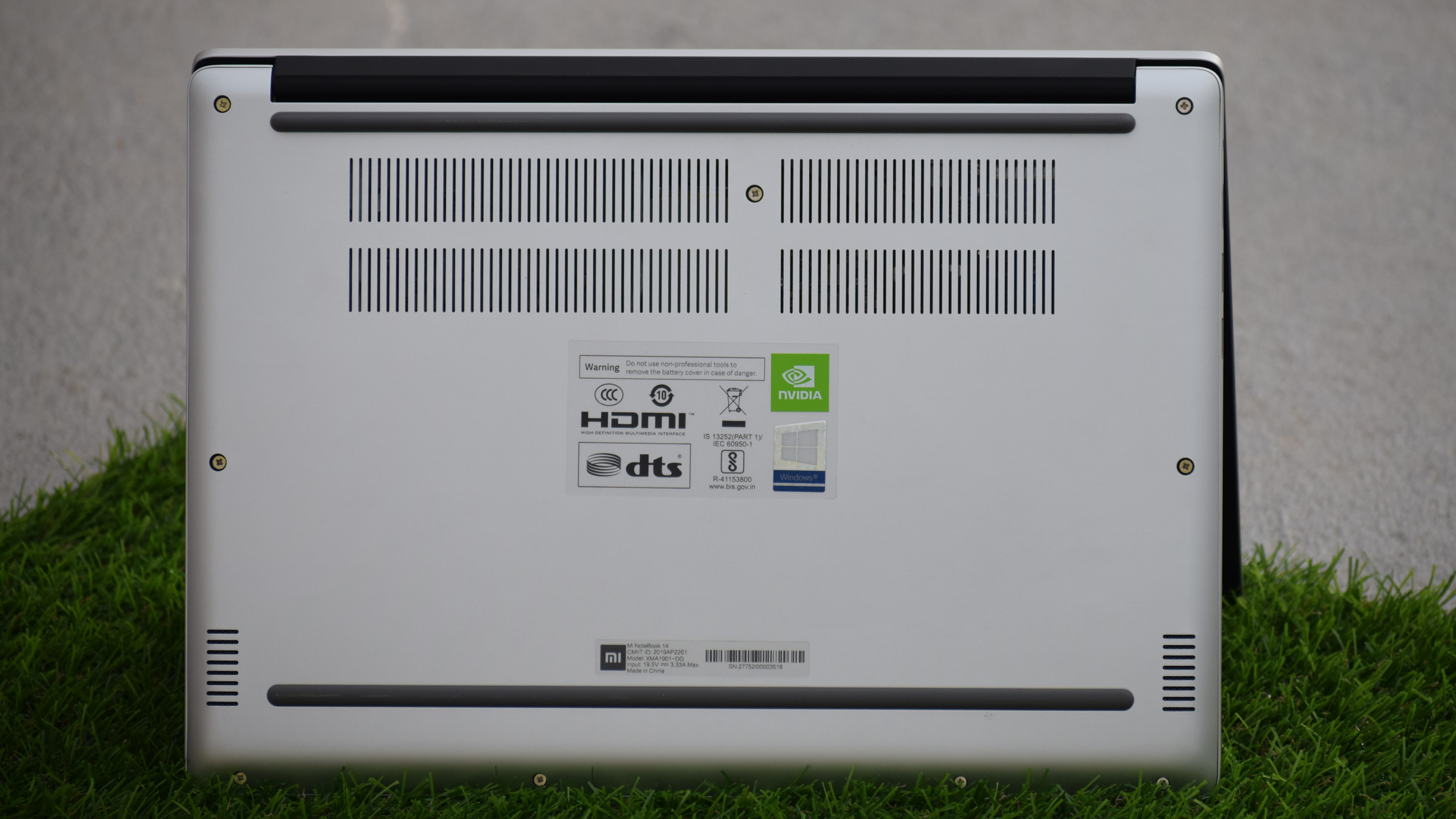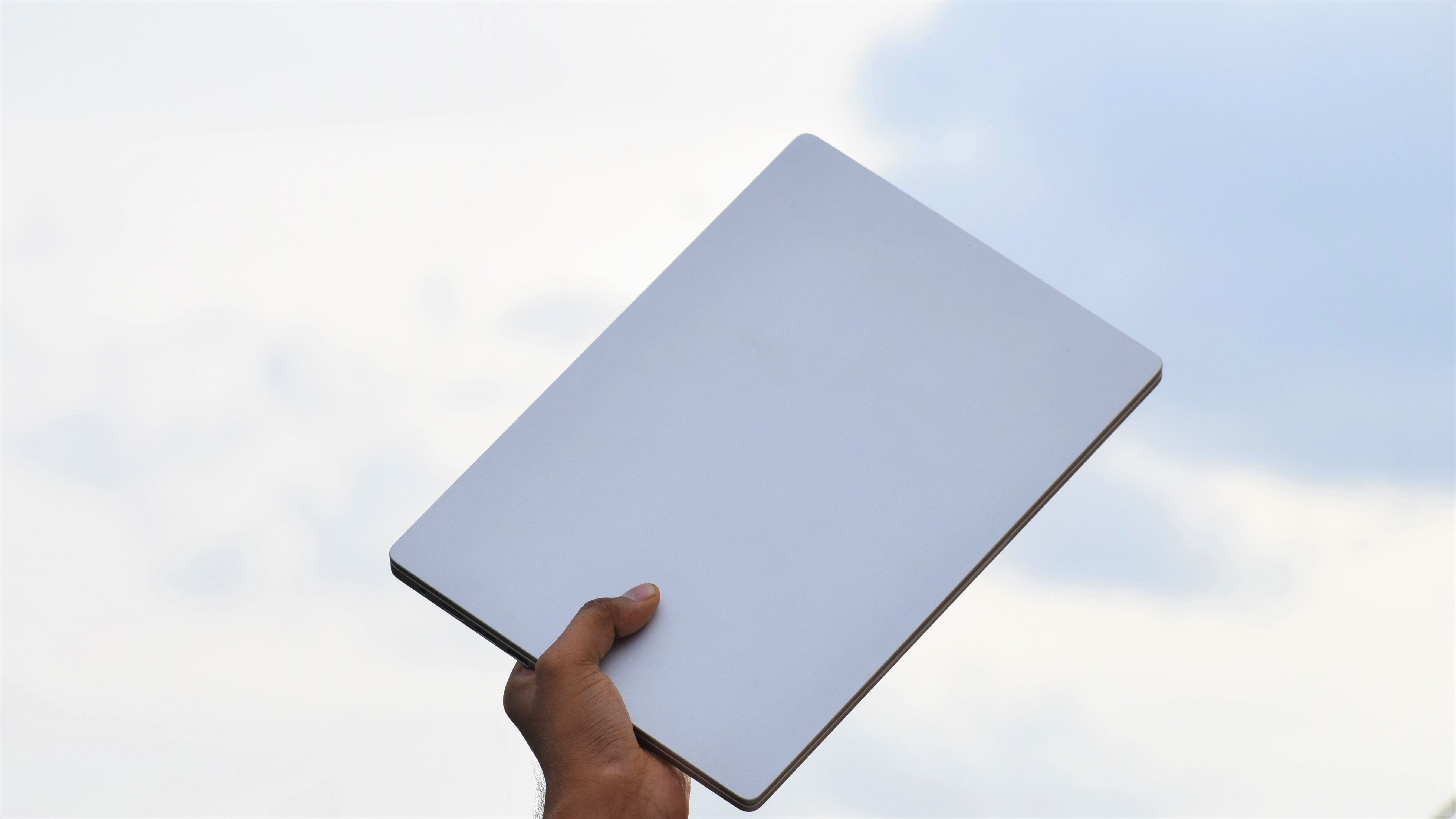TechRadar Verdict
The Xiaomi Mi NoteBook 14 brings a lot to the table and also misses out on a couple of things such as a backlit keyboard or an integrated webcam, that might be a deal-breaker for many. The key aspect of the laptop is its performance, which the Mi NoteBook 14 nails.
Pros
- +
Minimal metallic design
- +
Performance
- +
Battery life
- +
Fast charging
Cons
- -
No backlit keyboard
- -
No inbuilt webcam
- -
Lacks SD card slot
Why you can trust TechRadar
Xiaomi launched the Mi Notebook 14 and Mi NoteBook 14 Horizon Edition earlier this year. It marked the brand's entry into India's laptop market and both models created a lot of buzz around the tech community. The Horizon Edition went on to become one of our favourite picks under Rs 60,000. However, the cheaper model falls in a very crowded market where the competition is extremely intense.
With its entry to the laptop segment, Xiaomi is eyeing to grab a chunk of share in the Rs 40,000 to Rs 60,000 laptop segment. The mantra is pretty simple here. Just like what it did with most of the other products in its ecosystem, especially smartphones, the laptop comes with the latest specs packed in with a price that we can describe as quite aggressive for the laptop market.
But, there are a couple of cost-cutting measures that might be a deal-breaker for many. However, if you are a person who can leave out those couple of issues and use the machine, you won't be disappointed at the end of the day.
Xiaomi Mi NoteBook 14 Price and availability
The Mi NoteBook 14 was launched in India in June 2020 alongside the Mi NoteBook 14 Horizon Edition. The vanilla Mi NoteBook 14 is available in three variants and it was launched at an introductory price starting at Rs 41,999. Now, the Mi NoteBook 14 starts at Rs 43,999 and goes up to Rs 49,999.
| Configuration | GPU | Launch price | Current price |
|---|---|---|---|
| i5, 512GB SSD + 8GB | Nvidia MX250 | Rs 47,999 | Rs 49,999 |
| i5, 512GB SSD + 8GB | Intel UHD 620 | Rs 44,999 | Rs 46,999 |
| i5,256GB SSD + 8GB | Intel UHD 620 | Rs 41,999 | Rs 43,999 |
We tested the top of the line Mi NoteBook 14 which comes with an i5 processor and Nvidia GeForce MX250 graphics. The laptop is available on Amazon and Mi.com in India. The after-sale service and support will be taken care of by Xiaomi’s 2,500+ service centres pan India.
Check out the Mi NoteBook 14 on Amazon.in
Design
- 17.95mm thick, 1.5Kg
- Metallic build
- Minimal branding
The Mi NoteBook 14 opts for a simple, no-nonsense design, just like its older sibling. It is a unibody all-metal build with anodized sandblasted coating. It weighs in at 1.5
Kg and is 0.2 Kg heavier than the Horizon Edition. In terms of thickness, you are looking at 17.95mm, a bump from 17.15mm on the Horizon Edition. You see no branding on the laptop shell and that gives you an opportunity to add your own themes through as many stickers as you want. Since mine was a review unit, I held myself back.
Sign up for breaking news, reviews, opinion, top tech deals, and more.
When you open the lid, you get a 14-inch screen with a fair amount of bezels running around the edges and a 'Mi' logo at the bottom. The bottom bezels are pretty big but, that’s common with most laptops. Since the Mi NoteBook 14 is not as powerful as the Horizon Edition, Xiaomi has ditched the side air vents, with the bottom panel accounting for all of them.
14-inch FHD Anti-glare Display
10th Generation Intel Core i5
2GB Nvidia GeForce MX250 VRAM
8GB 2666MHz DDR4 RAM
512GB SATA 3 SSD
Windows 10 Home
46Wh Battery
65W Power Adapter
Weight: 1.5kg
HD Webcam(bundled)
The design and build of the laptop are pretty neat and minimal and I rather liked it as there's nothing really out of place. The Mi NoteBook 14 feels pretty solid in hand and it is easy to carry around. Although the design was inspired by Apple MacBook Air and MacBook Pro, Xiaomi manages to give the laptop a premium look and feel, thanks to the metal build.
Of course, I would have preferred it to be a bit lighter (given that I am coming from the IdeaPad 710S which weighs in at just 1.1kg), the Mi Notebook 14 is still an easy one to lug around, use in a cafe perched on a stool or quite simply work outdoors. I must say I enjoyed using this laptop on a flat surface. It was a breeze as the device comes with excellent rubber pads at the bottom which does a pretty good job to keep it in place.
Display
- 14-inch Full HD screen
- Anti-glare coating
- Narrow bezels
The laptop is still quite light weight and definitely made for portability. It packs in a 14-inch screen with 1,920 x 1,080 resolution. The display is pretty similar to the Horizon Edition. You get a 16:9 standard aspect ratio, 178-degree viewing angle, and 5.75mm bezels at the sides.
My experience interacting with the panel was just above average. The machine was fine for watching movies, shows, and YouTube videos with accurate colours, sharpness, and contrast levels. But, when it comes to tasks like editing photos on Photoshop, things started going the other way. The laptop made the image look too saturated and dark but, in reality, they were not that bad as the laptop made them look like.
The viewing angle was quite good as well with wide-angle coverage and the panel itself is pretty sharp and using it indoors was a breeze, in a the well-lit environment, you can work with 50-80% brightness. When it comes to outdoor usage, the laptop did struggle and viewing the content on the screen got pretty hard in the sunlight. The 250 nits of brightness wasn't enough on the outdoors as if was only when you held the laptop at a certain angle that the content became visible.
The anti-glare coating does take away external light sources that create reflection. Overall, the display is really good and one of the best IPS grade panels you can get under the Rs 50,000 segment.
Since it comes with quite a thin bezel (not as thin as Horizon), Xiaomi has left out the webcam from the laptop. However, the company is offering a free HD webcam that will be bundled with the laptop.
To use the webcam, you will have to sacrifice on one of the USB ports. Makes things slightly inconvenient if one is used to plugging in several add-ons. What's more of a challenge is that one could just forget to carry this accessory around, given that the webcam atop the laptop has become a part of our lives now, given the number of video calls that we attend.
The plug and play HD webcam bundled in the pack is decent enough and is better than having none. However, an additional gadget while travelling around is seldom a good option. To me it could be a deal-breaker but for those who do not travel all that much and aren't really addicted to video conferencing, this shouldn't be so.
Keyboard and trackpad
- Scissor Mechanism
- 1.3mm key travel
- Gesture support
You get a full-sized chiclet keyboard with scissor mechanism spread over a pretty standard layout. Since the vanilla Mi NoteBook 14 comes with a slightly smaller form factor compared to the elder sibling, the key spacing gets fairly better. You get a dozen function keys in the top row followed by a number row pad in the second set. Rest of the things are usual from here, QWERTY keypad along with the usual with the Tab, Caps lock, Shift, Ctrl buttons. The space bar and pretty 'spacious' too.
However, on a personal note, I did not quite like the half-sized arrow keys that the laptop comes with. It tends to be quite annoying, especially if you are coming from a keyboard that has a full-size upper/lower arrow keys. The key travel (1.3mm) is also good and you get good tactile feedback and is extremely comfortable to type on even for longer durations without any hassle. Just like the Horizon Edition, this model also omits the backlighting, which could prove to be a deal-breaker for some. Using it without lights on at night is a tough act to follow.
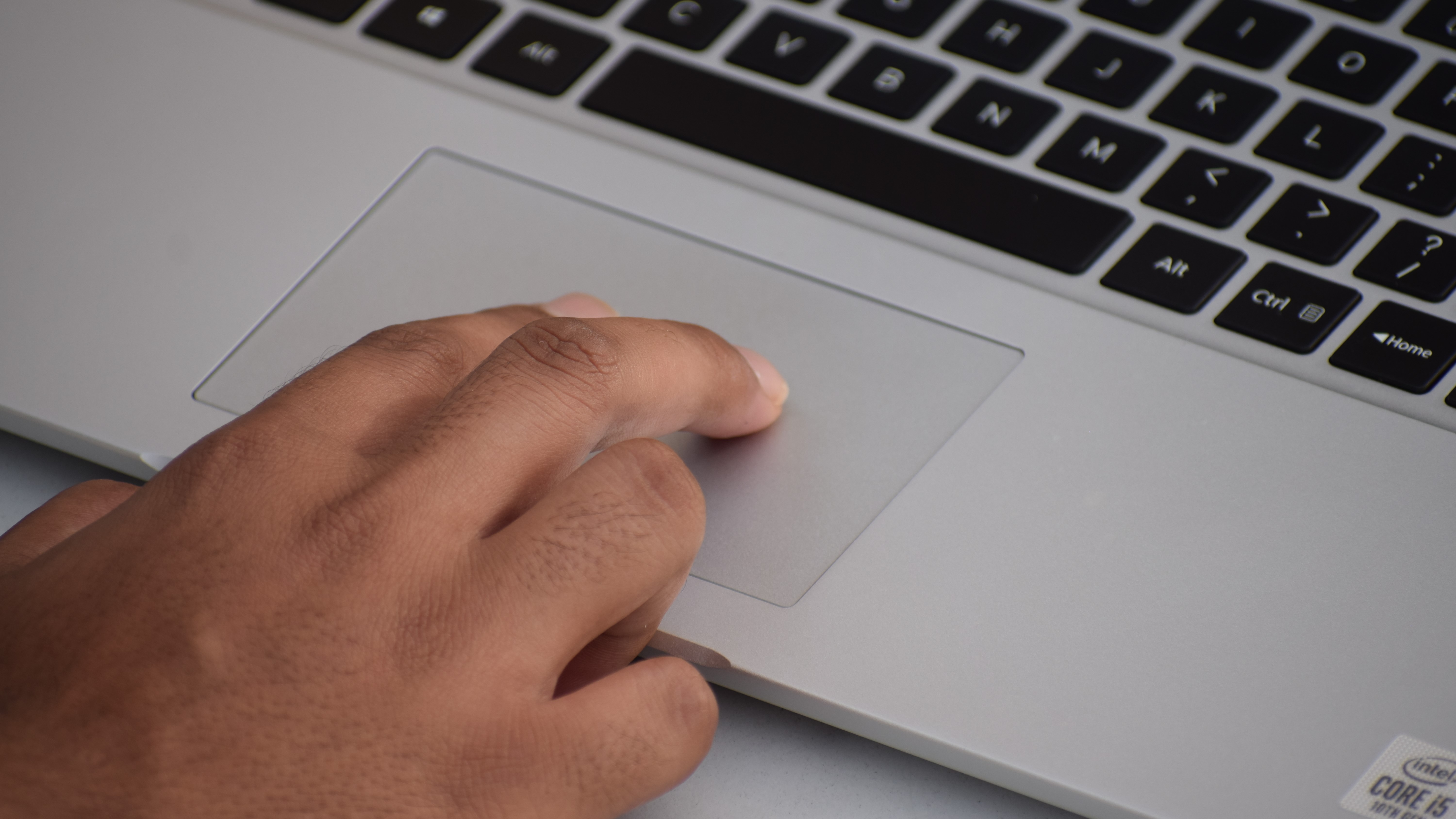
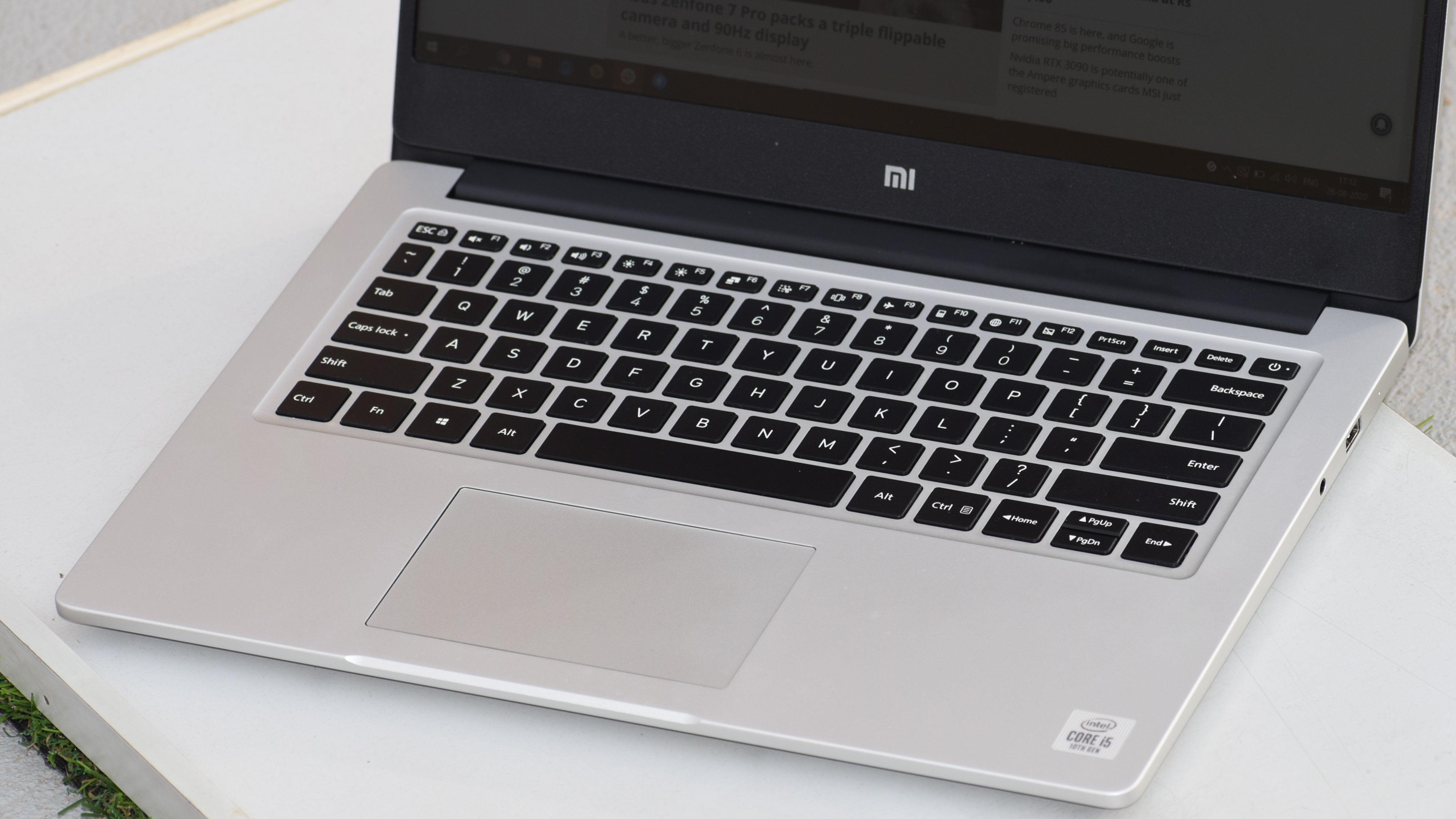
Coming to the trackpad, there is a fairly large space and Xiaomi has utilized it well to fit in the trackpad. The trackpad is good enough for day to day usages and it also supports Window 10 gestures. So, you get swipe gestures with two and three fingers. Scrolling, swiping, zoom in/out was all good. What's more, I was impressed by the palm rejection which worked quite well.
However, the trackpad is Flimsy and the clicks were unpleasant quite often. It also felt cheap at the start but then, once I got used to it, I guess it was ok. However, I would definitely recommend to Xiaomi that they should do something about the quality of the touchpad next time round. The clicks aren't consistent from the top to the bottom of the trackpad and it just felt cheap.
Performance
- 10th Generation Intel Core i5
- 2GB Nvidia GeForce MX250 GDDR5 VRAM
- 8GB RAM + 512GB SSD
The performance is where the Mi NoteBook 14 shines. The unit which we got is powered by Intel Core i5-10210U Comet Lake processor. It is a quad-core processor with eight threads to boost the performance. It has a base frequency of 1.6GHz and turbo boost takes it up to up to 4.2GHz. The laptop runs the 15W TDP variant, which is on the lower side and similar to the Horizon Edition. For graphics, the variant which we tested came with an Nvidia MX250 dedicated GPU with 2GB of GDDR5 VRAM. It is also available with Intel UHD Graphics 620.
On the inside, it is packed with 8GB 2666MHz DDR4 RAM which is not upgradable (soldered). And, there is 512GB SATA 3 SSD storage, which is a downgrade from m.2 NVMe SSD on the Horizon Edition. It is also available in a 256GB SSD option, which is much cheaper. There are no additional slots available for storage, which means you will just have to replace the existing drive for increasing the storage capacity.
The specs in the performance are pretty good for a laptop in this segment. The latest gen Intel CPU coupled with DDR4 RAM and SSD performed exceptionally well in my testing. My typical workday usage includes about 20 to 30 chrome tabs all the time, writing on Google docs, watching videos on Youtube, Slack running in the background and Bluetooth and Wi-Fi always on with brightness set upwards of 80 all the time. The laptop would throw everything I threw at it during my work time and did not disappoint me once.
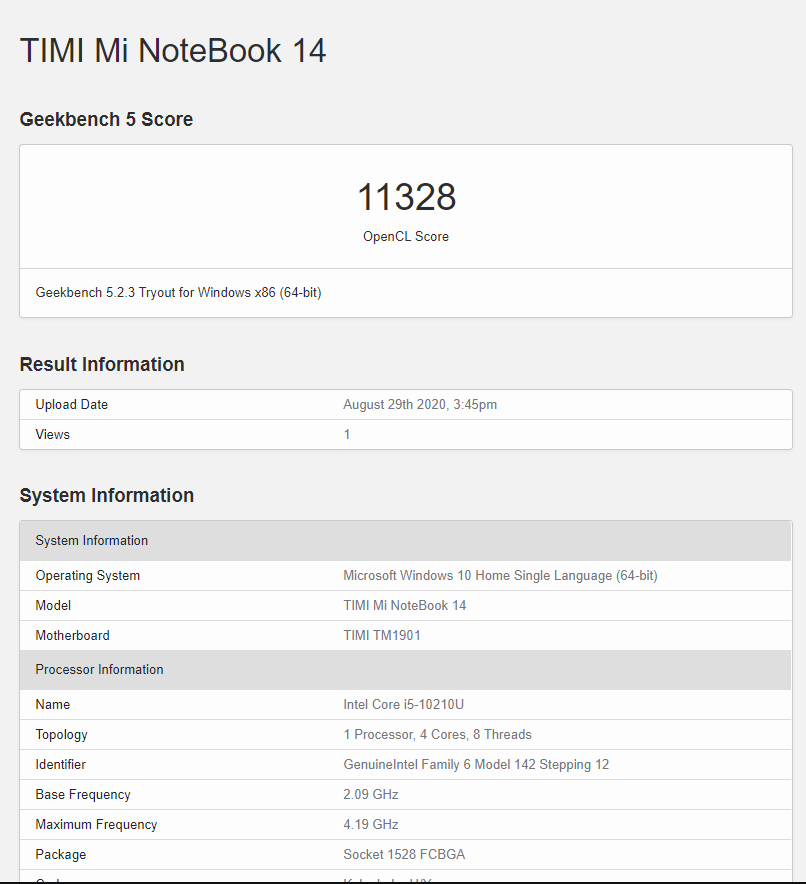

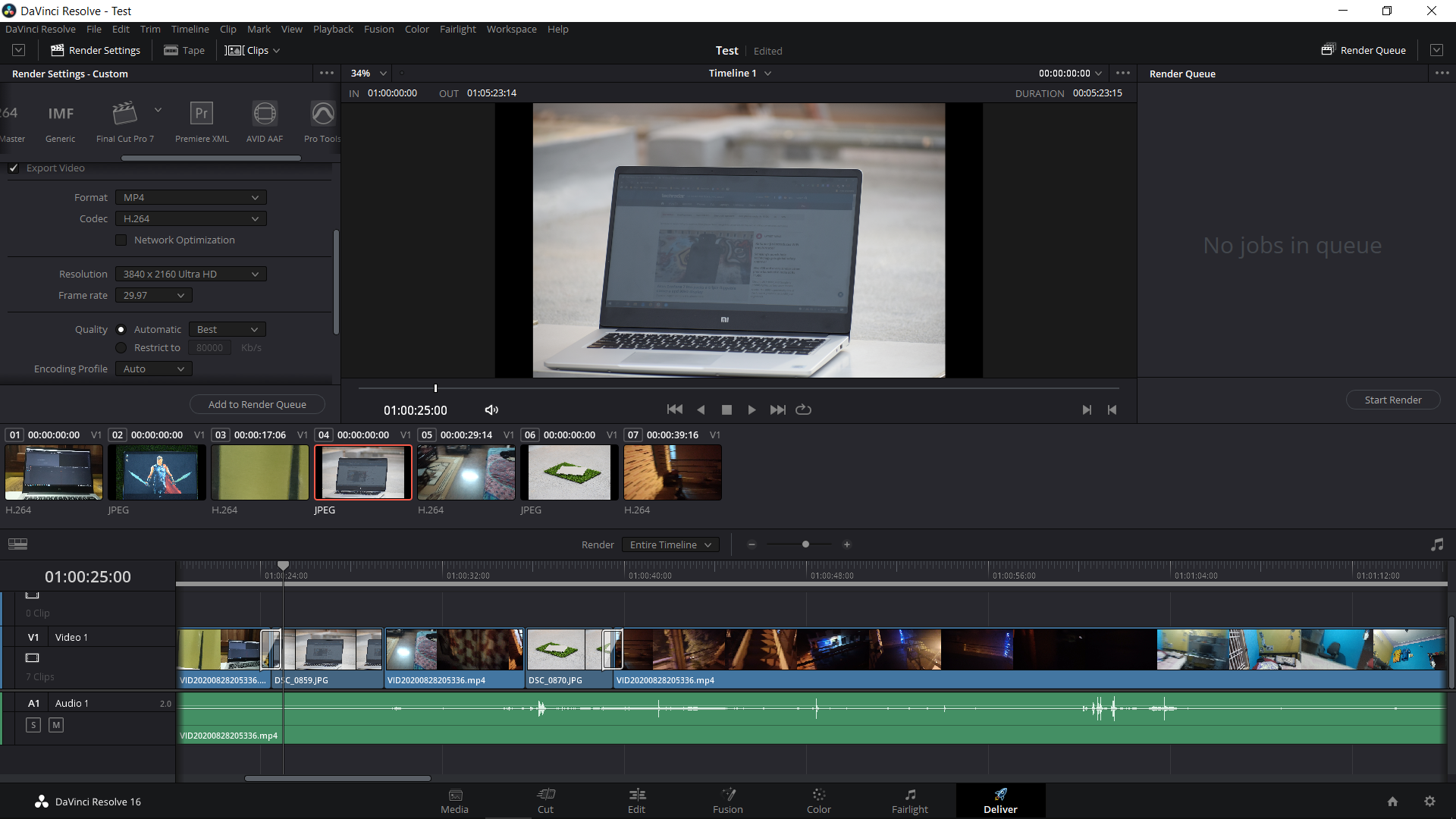
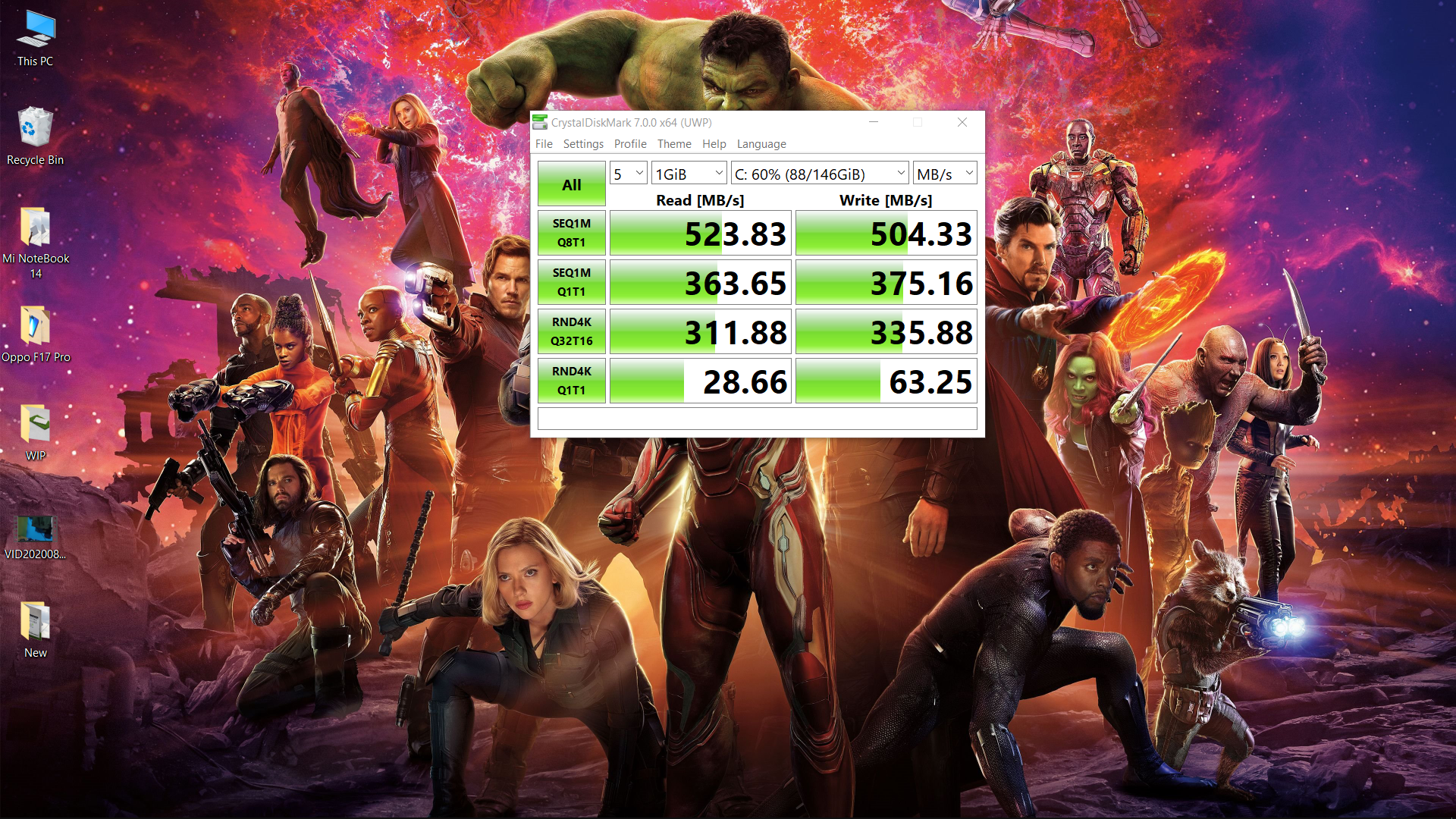

Over the weekends I used to fire up Photoshop for quick edits which were handled pretty well with multiple photos opening simultaneously. However, when it came to the video editing, rendering a 1-minute 4K video on DaVinci Resolve took more than 30 minutes and rendering a Full HD video took about 7 minutes. During the time of rendering, the thermals went so high that I had to stop other tasks on my laptop. It is not advisable to do video editing and especially not 4K video rendering. Also, the charging speed dropped while the video was rendering. For occasional Full HD video editing and rendering, this should be fine.
Xiaomi claims disk speed of up to 600MBps. In my testing, I got around 524MBps read speed and 504MBps write speed in the sequential test, which is great. In real life, a 5.73GB folder took around 1:36 minutes to get transferred from a pen drive to the laptop. The same file took around 30 seconds to transfer between one drive to another in the Mi NoteBook 14. The disk speed is quite standard and acceptable here. However, it is not as fast as the Horizon Edition which comes with an NVME SSD.
Gaming
Although the laptop is not necessarily meant for gaming, I tried out a few games. Casual games like GTA Vice City ran without any hassle. Slightly more graphic-heavy games such as Asphalt 9 Legends also had no issues running and gave us a smooth gameplay experience. However, when it came to games like PUBG Lite, the laptop started to struggle in low settings the game was just playable and gave us 60fps to 70fps frame rate. In medium settings, it struggled and the frame started dropping up to 16fps and started to lag and I had to lose my chicken dinner.
If you are a person who’d like to try out just casual games in between work or when bored, then you should be fine, else, you can have a look at our best laptop for gaming under Rs 50,000.
Features
The Mi NoteBook 14 runs on Windows 10 Home operating system and no, there were no apps pre-installed except for three. It comes with Mi smart share, Mi Blaze Unlock, and DTS Audio processing to customize the sound output. The Mi smart share feature tries to replicate the AirDrop feature from the MacBooks to transfer files between your smartphone to your notebook in an instant (works only with MIUI smartphones). The Mi Blaze Unlock feature allows you to unlock the laptop without asking for a PIN when you’ve paired your Mi Band and laptop. This worked pretty well in my testing and was seamless too.
Battery life
Another area where the laptop shines is battery life and charging. You get a 46Wh Battery and Xiaomi also managed to retain the same 65W fast changing from the Horizon Edition. The company claims the laptop can last up to 10 hours on a single charge. In reality, we were not disappointed at all.
On any given day, the laptop lasted a full working day with some more juice left (at least 5-10%). On heavy working days with 100% brightness, extensive Chrome, Docs, Slack usage the laptop gave a solid 7-8 hour battery life which also included 15-20 minutes of GTA Vice City/PUBG Lite gameplay and Wi-Fi and Bluetooth always on. With 80% brightness and the same amount of workload, the laptop could last up to 9 hours easily. If you are a person who can work with 50-70% brightness level, you can easily reach the 10-hour mark.
Fueling up the laptop is rather easy, thanks to the 65W charger provided in the box. I could charge the laptop up from 5% to 60% in 35 minutes and in an hour it went to 87% and for the last 13%, it took an additional 25 minutes. A quick 30 minutes change gave me a 3-hour run before shutting down.
Audio
- 2x2W Stereo Speakers
- DTS Audio Processing App Support
- 3.5mm headphone jack
The laptop comes with two 2W stereo speakers present on either end of the machine at the bottom. The stereo speakers are combined with DTS audio processing app lets you customize the sound signatures as per your needs. You can also stream music via 3.5mm headphone jack or Bluetooth.
Coming to the sound quality, the output was decent enough for a laptop and it can be good enough for a room. Since the speaker grills are below the laptop, a lot of your music/audio will be lost if you are using it on a flat surface. Audio via headphone jack and Bluetooth were pretty good and breezy.
Connectivity
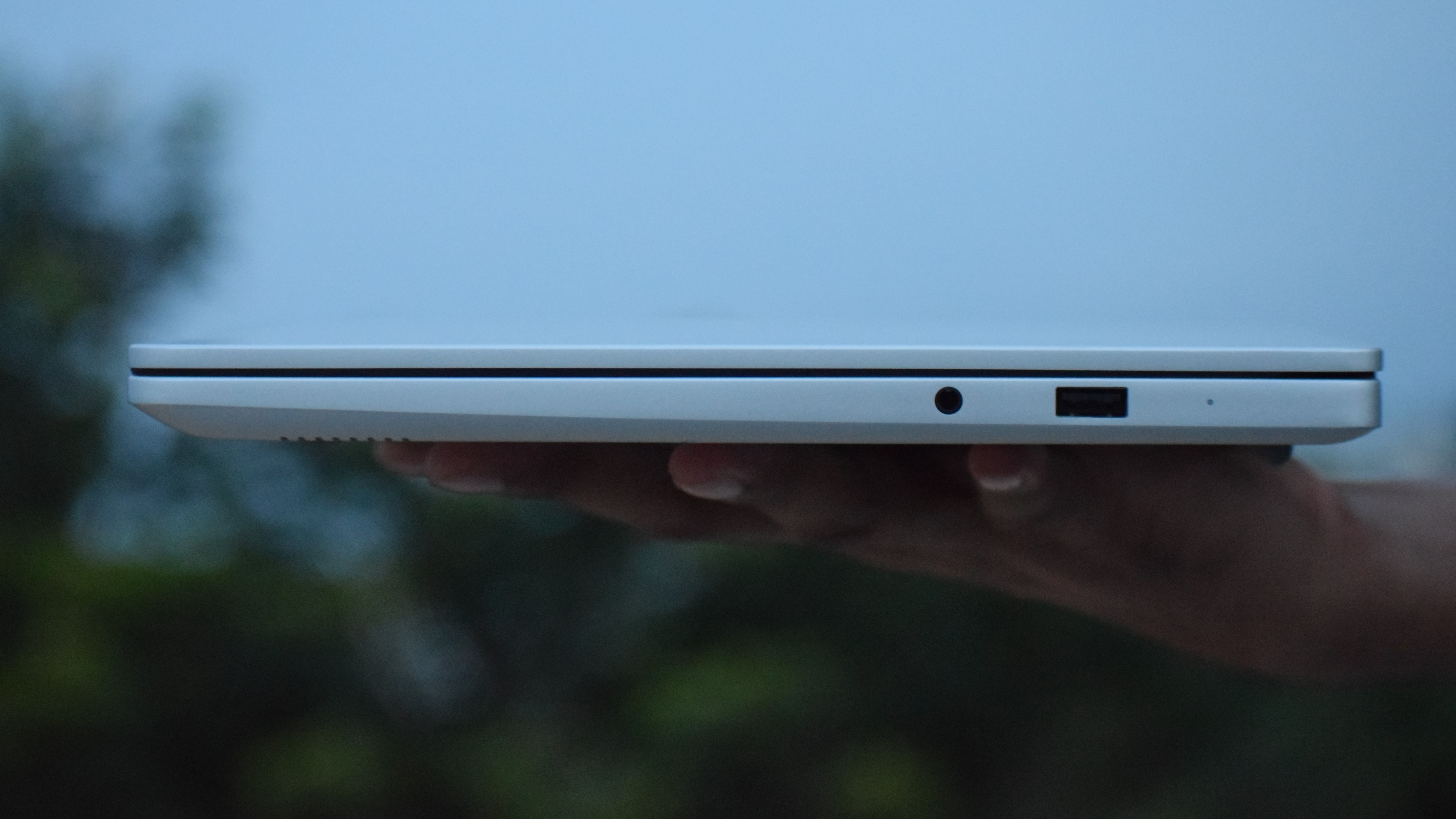
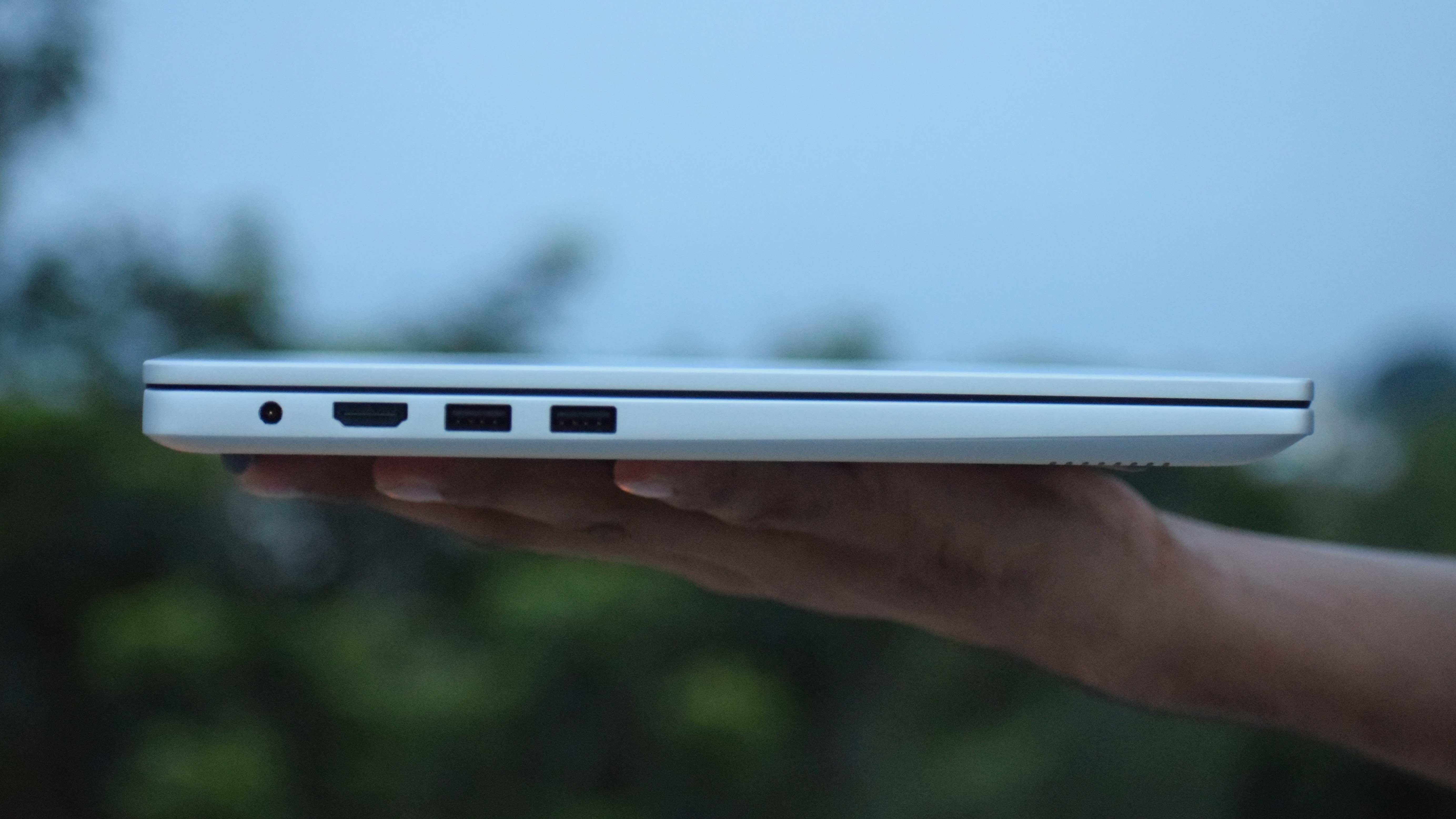
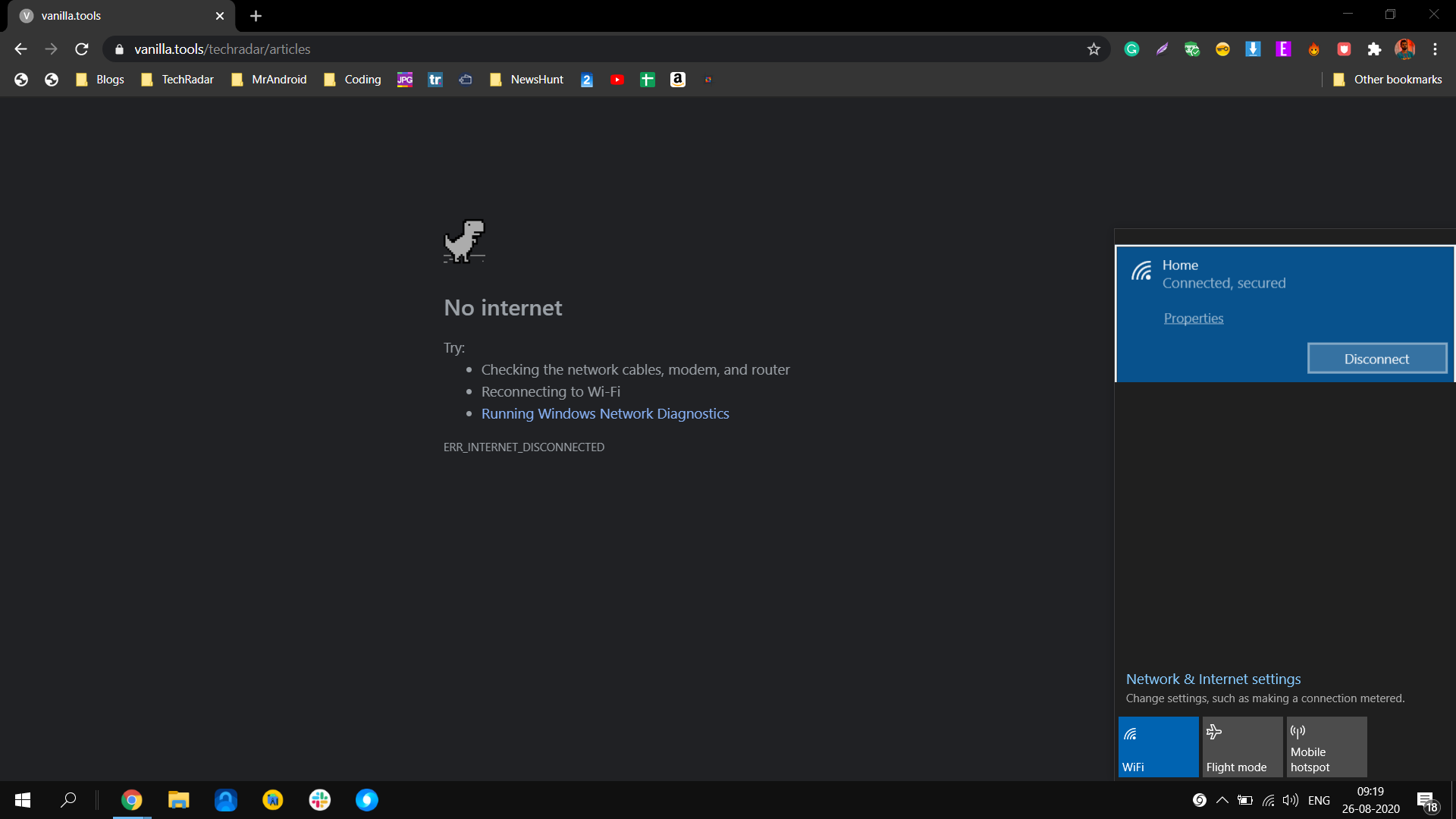
Port selection on Mi NoteBook 14 includes a couple of USB 3.1 Gen 1, and a USB 2.0, a full-sized HDMI port, combo audio jack, and DC-power in. The Type-C port which was present on the Horizon Edition is missing here. Apart from the Type-C port, another port that Xiaomi omitted is the SD card slot, which will be a bummer for a lot of content creators.
On the left, you get two USB 3.1 and HDMI ports which are placed very close to each other and can easily come in the way of other peripherals. The performance however with the USB 3.1 port was excellent with speed touching the 150Mbps mark.
Wireless connectivity options include dual-band Wi-Fi and Bluetooth 5.0. Both of them worked seamlessly and a couple of times I faced the issue where my Wi-Fi got disconnected automatically which looked like an isolated issue.
Verdict
With tons of options available in the sub Rs 50,000 laptop market, Xiaomi is aiming the Mi NoteBook 14 at people who are looking for productivity and battery life with a good display. For most parts, it does get the job done. However, when you start looking at the competition, the Mi NoteBook 14 looks pretty dull with the absence of features like a Type-C port, backlighting, and even fingerprint scanner. All of which are offered by most of the laptops in this segment.
Check out the Mi NoteBook 14 on Amazon.in
If you are looking for alternatives, you could check out the offerings from Asus, Acer, and Lenovo. The Honor MagicBook 15 is a great alternative, and it also makes a smaller hole in the pocket.
Buy it if…
You want good CPU performance
The latest 10th gen Core i5 processor does every day to day task you throw at it and will not disappoint you unless you have graphic heavy tasks like heavy gaming or video editing.
Battery life is important to you
The battery life is extremely dependable here. You are guaranteed to get at least 7 to 8 hours on an extremely busy day and 8-9 hours on a casual day. The cherry on top here is the fast charging, which can fully charge in 90 minutes.
Want a minimal yet well-made laptop
For those who want a minimal designed laptop without any branding. Not only that, the Mi NoteBook 14 also comes with a metallic body indeed makes the overall laptop build strong while keeping the weight at 1.5 kg.
Don’t buy it if…
You do a lot of gaming
The 2GB Nvidia GeForce 250 GPU is only sufficient for casual gaming and also photo editing. If you are looking for gaming or video editing, look elsewhere.
You are dependent on Web-cam
As you know, the laptop doesn't come with a built-in camera. The built-in camera is also just Ok-ish. And, if your work is dependent on video conferencing and travelling a lot, carrying it might always be a burden.
- Best laptops for work under Rs 60,000 in India for 2020
- Redmi Laptops around Rs 20,000 could be coming very soon to India

Srivatsa is a prolific writer who spearheads the core writing team on tech news, buying guides, reviews, and all gadget articles. He is passionate about technology.
